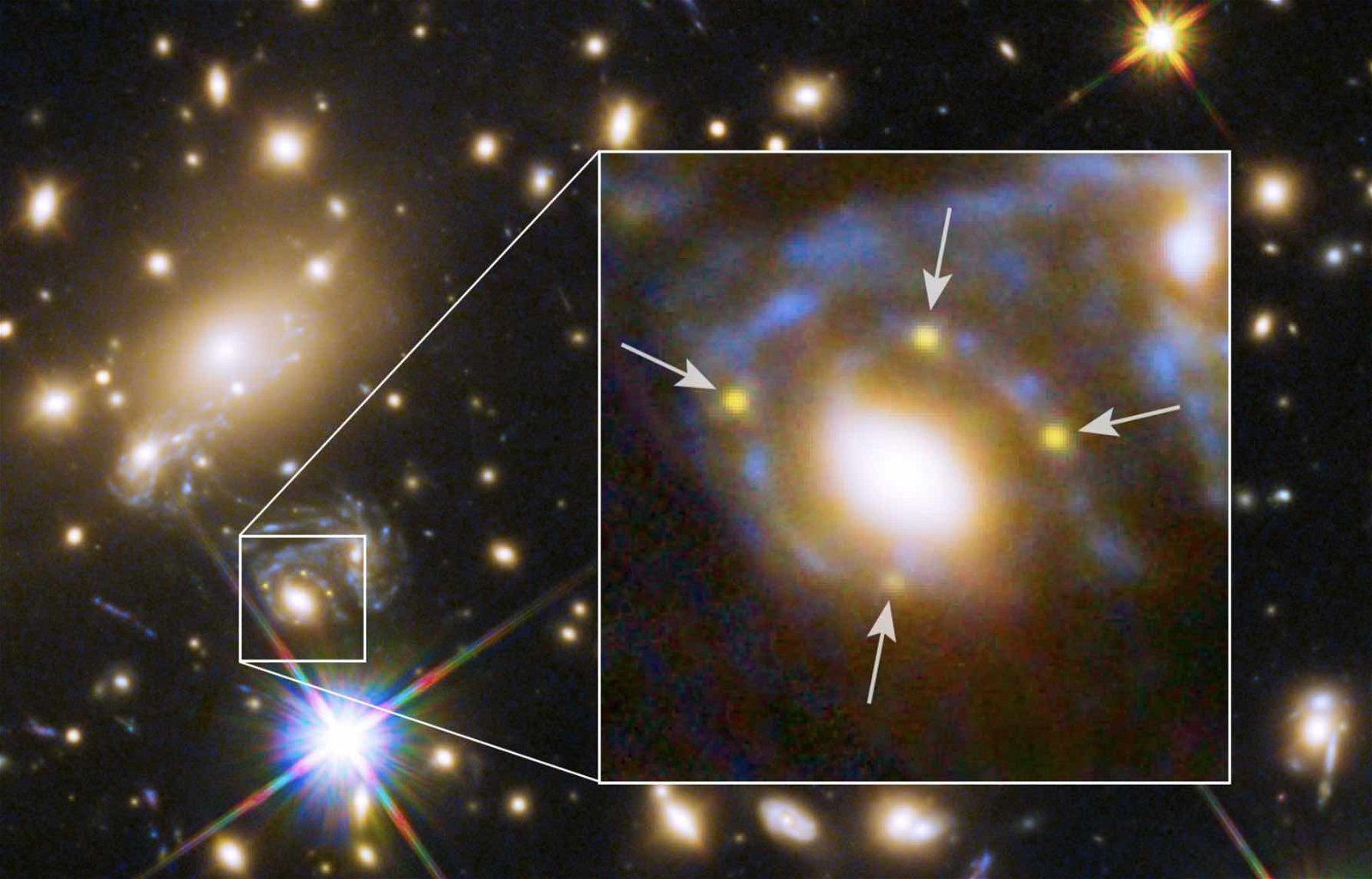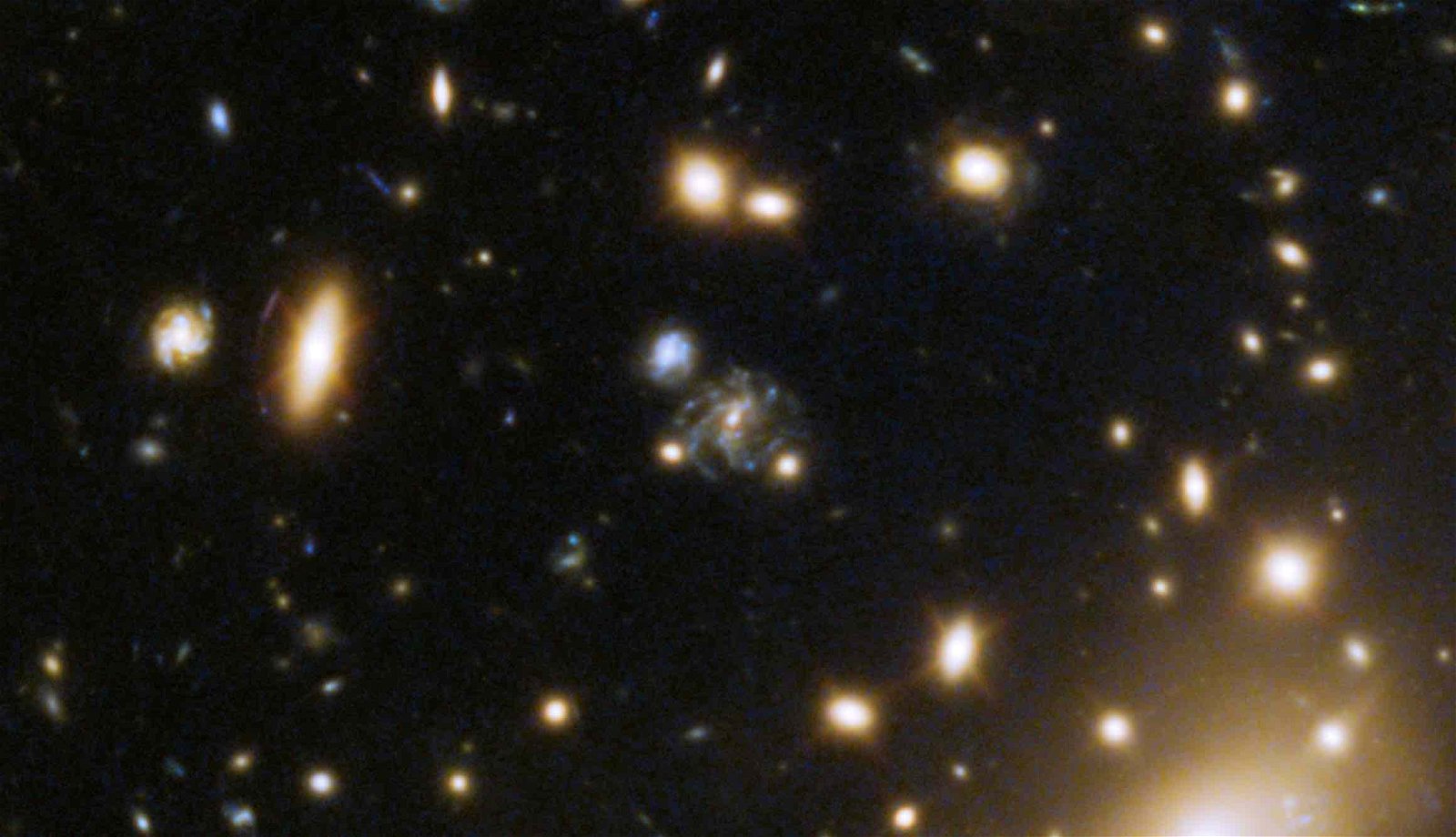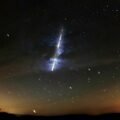Astronomers may soon be able to use NASA’s Roman Telescope to help unravel one of the greatest mysteries about our universe, with help from observing an odd cosmic phenomenon called gravitationally lensed supernovae.
For decades, astronomers have tried to definitively measure the rate at which the universe is expanding, known as the Hubble constant. This expansion can be explored in various ways, although past observations have produced differences in measurements, a conundrum known as the Hubble tension.
In the past, astronomers have used the brightness of objects like supernovae to attempt to make measurements that allow them to determine their distances. However, with the launch of NASA’s Roman telescope, researchers will soon be able to use gravitationally lensed supernovae to attempt to measure the Hubble constant using geometric methods.
Gravitational lensing is a phenomenon that occurs as light from a distant source is bent by the gravity of mass between it and an observer. Past imagery obtained by the Hubble Space Telescope has offered astronomers striking views of gravitationally lensed objects, which include multiple images of single supernovae positioned behind galaxies like those in the cluster known as MACS J1149.6+2223 (seen below), located more than 5 billion light-years away from Earth.


In the Hubble imagery, Supernova Refsdal, an exploding star some 9.3 billion light-years away, can be seen in four locations around one of the galaxies in MACS J1149.6+2223, giving it a curious structured appearance that almost suggests intelligent design. However, the phenomenon is quite natural, and is the same that produces a phenomenon astronomers call Einstein crosses.
Lou Strolger of the Space Telescope Science Institute (STScI) says NASA’s Roman telescope will be an ideal resource for astronomers wanting to use gravitationally lensed supernovae to try to measure the Hubble constant.
As co-lead of the Roman team that will study these objects, Strolger admitted that such objects “are rare, and very hard to find.”
“We have had to get lucky in detecting a few of them early enough,” Strolger said in a statement. “Roman’s extensive field of view and repeated imaging in high resolution will help those chances.”
Presently, there are just eight gravitationally lensed supernovae that have been discovered in the entire universe, only two of which are recognized as viable candidates to measure the Hubble constant based on the type of supernovae, as well their duration. Strolger and his team hope that using geometric methods of observing these objects could help astronomers understand why past measurements have produced conflicting results.
Additionally, Roman will be capable of producing surveys that will map the universe far more quickly than past efforts with existing space observatories like Hubble.
“Rather than gathering several pictures of trees, this new telescope will allow us to see the entire forest in a single snapshot,” said Justin Pierel of STScI, the research team’s co-lead.
Strolger and Pierel at STScI also hope that data collected by NASA’s Roman telescope will help them find additional examples of gravitationally lensed supernovae that currently remain undiscovered by using data collected by the telescope to produce “data reduction pipelines” that will help researchers detect these rare celestial occurrences automatically.
“Roman is truly the first opportunity to create a gold-standard sample of gravitationally lensed supernovae,” Strolger said in a statement.
“All our preparations now will produce all the components needed to ensure we can effectively leverage the enormous potential for cosmology,” he added. If successful, the team’s findings in the years ahead could offer some of the most complete measurements of the rate of the universe’s expansion ever collected, and ultimately help to shed light on one of the most enduring mysteries about our cosmos.
Micah Hanks is the Editor-in-Chief and Co-Founder of The Debrief. He can be reached by email at micah@thedebrief.org. Follow his work at micahhanks.com and on X: @MicahHanks.

